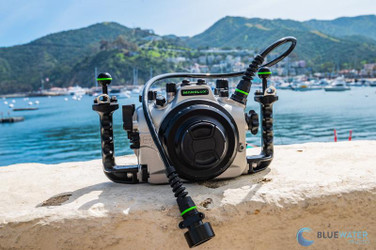A Hydrophone for Underwater Video
Posted by Nirupam Nigam on May 24th, 2023

The Marelux HIFI Hydrophone is the world's FIRST hydrophone designed for underwater housings! It is the perfect tool for underwater video shooters who want to bring a new dimension into their underwater recording and researchers studying underwater acoustics. As many divers know, the underwater world is not as silent as we might think. The ocean is full of the sound of grunts from aggressive fish, the singing of whales, and the snapping of shrimp. The Marelux Hydrophone offers a unique opportunity to add true-to-life sound to your underwater videos, providing them with a dimension of reality not possible before.
The hydrophone is sensitive down to -33 (+/-2) dB with a signal to noise ratio of 80 dB. For those of us who are not audio specialists, this is a good sensitivity level for the widest range of applications. For underwater video, a target volume should be -9 to -12 dB. With a sensitivity rating of -33 dB, you are able to reduce the audio levels on your camera for cleaner sound with less noise. Moreover, the hydrophone allows you to record audio underwater without using your camera's subpar internal mics though the thick walls of an underwater housing. This results in the cleanest underwater sound possible.
The Marelux hydrophone is designed to screw into a M16 bulkhead, compatible with most underwater housings. It is designed from an anodized aluminum alloy, waterproof to a depth of 100 meters (328 ft), and is 1 meter long which allows you to extend the recording out from the housing. The hydrophone connects internally to cameras via a 3.5mm microphone jack. With a simple watertight design, it's easy to use even for new underwater shooters. Considering this device creates a world of creative opportunities, we think a price point of $349 is very affordable.
Diving with the Marelux Hydrophone
Diving with the Marelux hydrophone was definitely a first for me. I learned a lot and ultimately realized to write a full, comprehensive review of the device I will need more of a mission than to "just dive." Using a hydrophone requires a specific goal and game plan during a dive. As I learned, if you are diving open circuit your bubbles are more easily picked up by the hydrophone. My recommendation is that if you are trying to capture a specific sound from an animal or a behavior, it's a good idea to set up your camera system on a tripod and swim a distance away so that the hydrophone doesn't pick up your bubbles. Another great way to make sure you capture the sound you are looking for is to use the hydrophone while free diving or on closed circuit.
So please take a listen to this test footage below, but you will here a lot of bubbles. Unfortunately, I did not realize that I would have to change my filming methodology for capturing sound. But this is why we dive with equipment and make mistakes for you.
Our plan is to complete the full review during our Bluewater Travel trips to Mo'orea, French Polynesia to swim with humpback whales and record their whalesong! So stay tuned!




